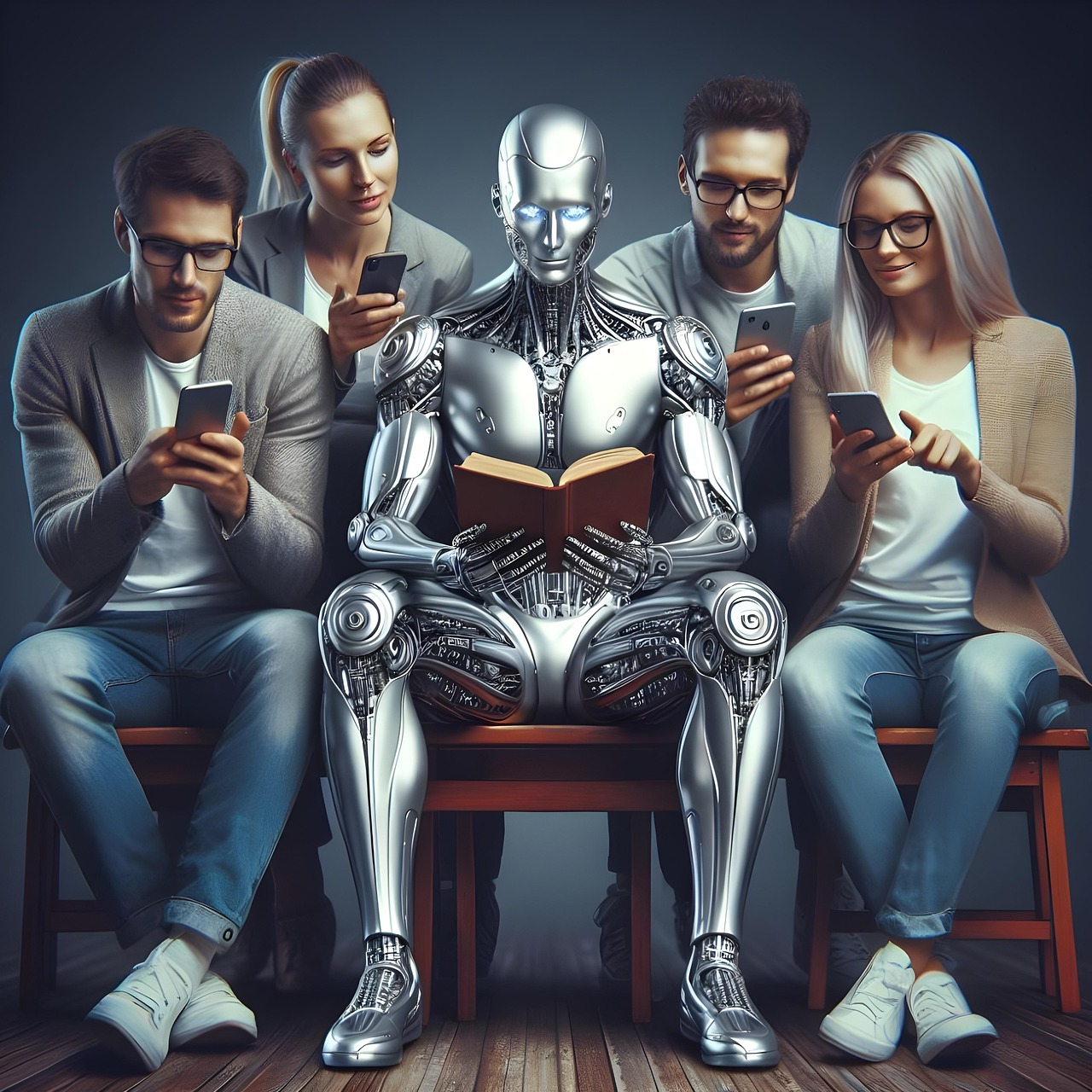
Modern technology is In today’s world, technology is advancing at an astonishing speed. It can often feel like every single day brings new inventions and breakthroughs that could reshape our future. Amid the constant flow of announcements about cutting-edge gadgets and futuristic upgrades, it’s easy to overlook the incredible ways progress is happening.
For example, there are AI programs and Modern technology that compose original poems and generate images from simple text prompts. Innovations also include 3D-printed eyes, advanced holograms, lab-grown food, and robots capable of interpreting brain activity.
Read more about Importance of parenting
Read more about Modern technology
Necrobotic ASometimes emerging technologies can be both incredible and slightly unsettling, offering the potential to reshape the future while also feeling a bit eerie.
This is a good way to describe necrobotics, which, as the name implies, involves turning deceased organisms into robotic devices such as Modern technology. While it might sound like something from a horror movie, researchers at Rice University are actively exploring this field.
A team managed to transform a dead spider into a robot-like gripper capable of picking up objects. Their method involves injecting the spider with air. Spiders naturally extend their legs using hydraulics by pushing their blood (haemolymph) into them, so this Modern technology mimics that process.
Although this technology is still in its early stages, it could one day allow dead animals to be repurposed for scientific applications… a concept that certainly feels reminiscent of Frankenstein!
Sand Batteries
Not every innovation needs to be complex to improve the future—some are simple but highly effective.
One such innovation comes from Finnish engineers, who discovered a way to turn sand into a massive energy storage system.
They stacked 100 tons of sand inside a 4 x 7-meter steel container and then heated it using energy from wind and solar power.
The stored heat can later be released by local energy providers to warm nearby buildings. This works through a process called resistive heating, where electricity flowing through a material generates heat.
Sand, like many other ordinary materials, warms up as electricity passes through it, and this Modern technology heat can then be stored and used as a source of energy over long periods.
E-skin could let us hug friends from afar
While modern technology allows us to talk and see each other almost anywhere in the world, there’s still no reliable way to share the sense of touch over long distances. Now, engineers at the City University of Hong Kong have developed a soft, wireless e-skin that could eventually make virtual hugs a reality.
The e-skin features flexible actuators that detect the wearer’s movements and turn them into electrical signals. These signals can then be transmitted to another e-skin via Bluetooth, where the actuators recreate the movements as mechanical vibrations. Researchers say this system could let friends and family “feel” each other even when far apart.
Scent-enabled VR
Scientists at City University of Hong Kong (CityU) recently created what they call a “wireless, skin-mounted olfactory feedback system”—essentially VR devices that allow users to smell.
The system works by heating scented wax to release adjustable levels of odor. There are two versions: one that sits just above the upper lip for direct nostril access, and another mask-style device capable of producing hundreds of scent combinations.
According to the university, this technology has many uses, including virtual teaching and 4D movie experiences. In the future, you might not only see and hear your favorite films in VR—you could also smell them, making immersion even more realistic.
Launching satellites with a twist
Who would have imagined that the most efficient way to send satellites into space might be a giant “slingshot”? While it’s more advanced than a simple catapult, the concept is similar.
SpinLaunch has designed a prototype system that propels satellites or other payloads using kinetic energy instead of traditional chemical rockets. The system can spin payloads up to 8,000 km/h and 10,000G before shooting them through a launch tube.
Although small rocket engines are still needed to place payloads into orbit, SpinLaunch claims this method reduces fuel use and infrastructure requirements by about 70%. The company has signed a testing agreement with NASA.
Xenotransplantation
Transplanting a pig’s heart into a human may sound risky, yet this procedure—called xenotransplantation—is advancing rapidly.
Xenotransplantation involves transferring cells, tissues, or organs from an animal into a human, and it has the potential to transform surgical care. One of the most frequent procedures involves implanting a pig’s heart into a human. So far, this has been successfully performed twice. One patient survived only a few months, while the second is still under observation.
Before the surgery, the animal heart must be genetically modified. Certain genes are removed, and human genes are added to improve immune compatibility and prevent abnormal tissue growth.
Currently, these operations remain high-risk with uncertain outcomes. However, in the future, xenotransplants could become routine, providing organs and tissues from animals to humans in need.
AI Image Generation
As artificial intelligence reaches human-level performance in certain tasks, a new field has emerged in the arts. Scientists at OpenAI have developed software capable of generating images from simple text descriptions.
For example, if you type “a dog wearing a cowboy hat singing in the rain,” the system produces a variety of completely unique images that match that idea. You can even specify the artistic style you want the image in. That said, the technology is still developing and can struggle, especially when given vague or poorly constructed prompts for things like cartoon character design.
This program, called DALL·E, is now in its second version, and the developers plan to keep improving it. In the future, it could be used to produce art exhibitions, provide companies with rapid, original illustrations, or even transform how memes are created online.
There’s also another AI tool called MidJourney, which can turn simple text prompts into stunning gothic-style artworks. It really feels like we’re living in the future.
Brain-Reading Robots
What was once only science fiction, brain-reading technology has advanced dramatically in recent years. One of the most fascinating practical applications has come from researchers at the Swiss Federal Institute of Technology in Lausanne (EPFL).
Thanks to a combination of machine learning, a robotic arm, and a brain-computer interface, researchers have developed a way for tetraplegic patients—those who cannot move their arms or legs—to interact with their surroundings.
During trials, the robotic arm could carry out simple actions such as navigating around obstacles. The algorithm then interpreted brain signals captured through an EEG cap to detect when the arm performed a movement that the brain considered incorrect, such as moving too close to an obstacle or too quickly.
Over time, the system adapts to the individual’s preferences and neural patterns. In the future, this technology could pave the way for brain-controlled wheelchairs or assistive devices for tetraplegic patients.
3D Printed Bones
3D printing has potential in areas ranging from low-cost housing to durable armor, but one of its most fascinating applications is the production of bones.
Ossiform is a company that focuses on medical 3D printing, creating patient-specific bone replacements made from tricalcium phosphate—a material with properties similar to natural bone.
The process is straightforward. Hospitals can perform an MRI scan, which is then sent to Ossiform. They create a 3D model of the exact implant required. After the surgeon approves the design, the implant is printed and ready for surgery.
What makes these 3D-printed bones special is that, thanks to tricalcium phosphate, the body can remodel them into fully vascularized bone. This allows the implant to restore the function of the original bone. To maximize integration, the implants are porous and include large channels for cells to attach and regenerate bone tissue.
3D-Printed Food
What’s on the menu? Soon, it might be 3D-printed, laser-cooked cake. Researchers at Columbia University School of Engineering have developed a device that can print a seven-ingredient cheesecake using food inks and cook it precisely with a laser.
The creation included ingredients like banana, jam, peanut butter, and Nutella. This technology could one day enable personalized meals for professional athletes, patients with dietary restrictions, or anyone who wants a quick, customized dish.
Natural Language Processing
Natural language processing (NLP) is a major trend transforming the internet. You’ve likely seen it in Google’s autocomplete feature or in your phone’s predictive typing, but it’s capable of far more.
OpenAI, a leading AI company, first gained attention with its image generator DALL-E 2 and later introduced ChatGPT—a chatbot that can compose poems, explain complex ideas, and hold full conversations like a human.
ChatGPT operates using GPT-3, a program trained on billions of text examples to generate coherent and logical sentences.
This AI demonstrates the potential of the future, capable of building websites from scratch, writing entire books, and even attempting humor—though it’s still working on perfecting its jokes.
Boom-Free Supersonic Flight
NASA’s X-59 “quiet” supersonic jet is scheduled for its maiden flight later this year at the Armstrong Flight Research Center. The aircraft is currently being put together at Lockheed Martin’s Skunk Works facility in Palmdale, California.
Its body, wings, and tail are specifically engineered to manage airflow as the plane travels, aiming to minimize the loud sonic boom that usually occurs when breaking the sound barrier. If the first test goes as planned, NASA intends to conduct additional flights over populated areas in 2024 to evaluate public reactions.
Digital “Twins” for Health Monitoring
In Star Trek, people could step into the medbay and get a complete body scan for illnesses or injuries. Q Bio, a US-based company, aims to bring a similar concept to real life, which could improve health outcomes while reducing the workload for doctors.
Q Bio has developed a scanner capable of measuring hundreds of biomarkers in roughly an hour, from hormone levels to liver fat to signs of inflammation or cancer. This information is used to create a 3D digital avatar of a patient – called a digital twin – that can be updated with each scan over time.
CEO Jeff Kaditz envisions this technology ushering in a new era of preventative, personalized medicine. The data collected can help doctors identify patients who need urgent care and develop more advanced methods of diagnosing illnesses.
Direct Air Capture
While trees naturally absorb CO2 through photosynthesis, emerging technology can remove carbon dioxide from the air more efficiently while using less space.
This method, called Direct Air Capture (DAC), extracts CO2 from the atmosphere and either stores it in underground geological formations or combines it with hydrogen to create synthetic fuels.
Although DAC shows great promise, it currently faces challenges. Existing facilities are operational but consume large amounts of energy. If energy requirements can be reduced, DAC could become a major technological breakthrough for environmental protection.





